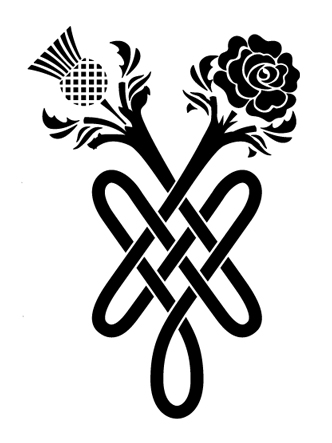Yesterday I was at the Halton Horror Festival, talking about writing gothic romance. There were a few zombies in the audience, bu they behaved themselves and listened attentively. Anyway, I thought I'd recreate that talk here, for those of you who might be interested in writing your own gothic romance, or those of you who would just like to read a post about this fascinating genre.
How do you know if you're a fan of the gothics? Well, if, like me, you enjoy romance with a dash of horror or a creepily ever after ending, then chances are that you’re a fan of the gothic genre.
But is there a formula to gothic writing? Well there are certainly elements that can be applied to the gothics, but as with any genre, it is good writing that will shine through.
1. Atmosphere
This is the key to the gothic. Poetic, gloomy language sets the scene. The atmosphere must be lush, decadent, beautiful, yet horrifying. Contrasting light and shade are key elements. The shadows are stronger, but the light is allowed to filter through.
2. Setting
The setting is another character in a gothic. It is often a remote building, possibly of medieval origin, for example a castle, abbey or crumbling manor house.
Think wild mysterious landscapes, bleak moors, hard to reach islands or deep, inaccessible valleys. Enclosed or claustrophobic spaces are also symbolic in gothic writing. Crypts, passageways, caves, dungeons, secret rooms, dark towers, cloisters...
3. The Male Protagonist
Ah, our hero. Or anti-hero, in the case of the gothics (think Rochester in Jane Eyre). He may have inherited powers or status, so he might be titled or talented. He is likely to be solitary or egocentric. His personality will be deeply flawed and he could well be obsessive. We may get a sense of duality, or even that there is a doppleganger or evil twin. He may attract yet repulse our heroine, and the sensual elements he brings to the story can be overt or implied.
4. The Female Protagonist
Our heroine has grown up since the days of Jane Eyre and Rebecca! Traditionally, she was a trembling victim, frail, passive and naïve, who was subjected to grotesque acts by a superior will. Now, however, she is likely to be strong and feisty. She may well have many of the same characteristics as the male protagonist. And she will fight back!
5. Dark Secrets
Secrets are the lynchpin of most gothic novels. Generally, they are so dark and insurmountable that they spell doom for the main characters and make their lives unbearably difficult and complex.
6. Death and violence
This can be explicit or implied. Often it is the threat of something horrific rather than the reality of it which gives the gothic its unique atmosphere. Think clanking chains or ghostly footsteps rather than axe-wielding serial killers.
7. Forbidden Love
That which is taboo elsewhere, is commonplace in the gothic. Incest is a familiar theme in these novels and adds to the tortured, twisted secrets that must remain forever hidden. If that's a step too far for you, the love should be forbidden for another reason. Perhaps a family feud or one of those dark, gothic secrets.
8. Haunting
Houses, belongings, animals, toys. All of these can be subject to demonic possession. You name it, if it can be haunted it will be and should be at some point in gothic literature. Reincarnation is also a popular theme.
9. Curiosity
We all know it kills cats and it’s likely to kill our protagonists too if they're not careful. Picture our heroine in her flimsy gown, nervous but determined as she enters the forbidden abandoned wing, or tiptoes down the stairs to the dungeons, climbs the ladder to the attic full of cobwebs and moth-eaten furnishings, running from the house in terror toward the clifftop… We’ve all seen those scenes in horror films. We’ve all shouted at the screen “Don’t go into the attic!” and shivered with a combination of pleasure and terror when our heroine ignores us. Bless her.
10. Ignorance (is bliss)
Knowledge is power, that much is true. But Jane Eyre would not have worked well as a story if Mr Rochester had said at the outset, “There’s something I need to tell you about my first wife…” (that statement applies equally well to Maxim de Winter in Rebecca and so many other gothic heroes).
11. Remoteness
The castle is always on an isolated clifftop, the mansion at the end of a long, winding drive, the island inaccessible unless by the weekly cargo plane.
12. Omens and portents
Symbols and signs steer our characters--and, of course, us as readers--along a specific path. But are we being deliberately misled?
13. Obsession
Desire, lust hatred, revenge, family. Any or all of the above may lead to an obsessive character who is ripe for a role in a gothic story.
14. Mental illness
Madness was a popular theme in the traditional gothics. If you are writing a modern gothic your treatment of these issues will be very different to those of writers of historical gothics. We tend (hopefully) to be slightly more sympathetic these days.
15. Sensuality
Finally, let’s talk about sex. In the traditional gothics, it was implied. These characters misbehaved in more ways than one, but they tended to do it behind closed doors. In the ‘new gothics’ the sensuality that was hinted at in the past is more explicit. Readers will get an erotic shiver down their spine as well as a spooky one!
Now, obviously, if you sat down tomorrow and wrote a novel which included all of the above elements things you would:
a) end up tearing your own hair out as you tried to keep track of your plot
b) use up all of your best ideas in one burst of wild gothic energy and never write another word
c) re-write The castle of Otranto by Hugh Walpole
But, if you are serious about writing gothics (and for my sake and that of my fellow gothic fans, I hope you are), then I’d urge you to think about including some of these elements in your novel.
Good luck! I look forward to reading all of this gothic gorgeousness very soon.
How do you know if you're a fan of the gothics? Well, if, like me, you enjoy romance with a dash of horror or a creepily ever after ending, then chances are that you’re a fan of the gothic genre.
But is there a formula to gothic writing? Well there are certainly elements that can be applied to the gothics, but as with any genre, it is good writing that will shine through.
1. Atmosphere
This is the key to the gothic. Poetic, gloomy language sets the scene. The atmosphere must be lush, decadent, beautiful, yet horrifying. Contrasting light and shade are key elements. The shadows are stronger, but the light is allowed to filter through.
2. Setting
The setting is another character in a gothic. It is often a remote building, possibly of medieval origin, for example a castle, abbey or crumbling manor house.
Think wild mysterious landscapes, bleak moors, hard to reach islands or deep, inaccessible valleys. Enclosed or claustrophobic spaces are also symbolic in gothic writing. Crypts, passageways, caves, dungeons, secret rooms, dark towers, cloisters...
3. The Male Protagonist
Ah, our hero. Or anti-hero, in the case of the gothics (think Rochester in Jane Eyre). He may have inherited powers or status, so he might be titled or talented. He is likely to be solitary or egocentric. His personality will be deeply flawed and he could well be obsessive. We may get a sense of duality, or even that there is a doppleganger or evil twin. He may attract yet repulse our heroine, and the sensual elements he brings to the story can be overt or implied.
4. The Female Protagonist
Our heroine has grown up since the days of Jane Eyre and Rebecca! Traditionally, she was a trembling victim, frail, passive and naïve, who was subjected to grotesque acts by a superior will. Now, however, she is likely to be strong and feisty. She may well have many of the same characteristics as the male protagonist. And she will fight back!
5. Dark Secrets
Secrets are the lynchpin of most gothic novels. Generally, they are so dark and insurmountable that they spell doom for the main characters and make their lives unbearably difficult and complex.
6. Death and violence
This can be explicit or implied. Often it is the threat of something horrific rather than the reality of it which gives the gothic its unique atmosphere. Think clanking chains or ghostly footsteps rather than axe-wielding serial killers.
7. Forbidden Love
That which is taboo elsewhere, is commonplace in the gothic. Incest is a familiar theme in these novels and adds to the tortured, twisted secrets that must remain forever hidden. If that's a step too far for you, the love should be forbidden for another reason. Perhaps a family feud or one of those dark, gothic secrets.
8. Haunting
Houses, belongings, animals, toys. All of these can be subject to demonic possession. You name it, if it can be haunted it will be and should be at some point in gothic literature. Reincarnation is also a popular theme.
9. Curiosity
We all know it kills cats and it’s likely to kill our protagonists too if they're not careful. Picture our heroine in her flimsy gown, nervous but determined as she enters the forbidden abandoned wing, or tiptoes down the stairs to the dungeons, climbs the ladder to the attic full of cobwebs and moth-eaten furnishings, running from the house in terror toward the clifftop… We’ve all seen those scenes in horror films. We’ve all shouted at the screen “Don’t go into the attic!” and shivered with a combination of pleasure and terror when our heroine ignores us. Bless her.
10. Ignorance (is bliss)
Knowledge is power, that much is true. But Jane Eyre would not have worked well as a story if Mr Rochester had said at the outset, “There’s something I need to tell you about my first wife…” (that statement applies equally well to Maxim de Winter in Rebecca and so many other gothic heroes).
11. Remoteness
The castle is always on an isolated clifftop, the mansion at the end of a long, winding drive, the island inaccessible unless by the weekly cargo plane.
12. Omens and portents
Symbols and signs steer our characters--and, of course, us as readers--along a specific path. But are we being deliberately misled?
13. Obsession
Desire, lust hatred, revenge, family. Any or all of the above may lead to an obsessive character who is ripe for a role in a gothic story.
14. Mental illness
Madness was a popular theme in the traditional gothics. If you are writing a modern gothic your treatment of these issues will be very different to those of writers of historical gothics. We tend (hopefully) to be slightly more sympathetic these days.
15. Sensuality
Finally, let’s talk about sex. In the traditional gothics, it was implied. These characters misbehaved in more ways than one, but they tended to do it behind closed doors. In the ‘new gothics’ the sensuality that was hinted at in the past is more explicit. Readers will get an erotic shiver down their spine as well as a spooky one!
Now, obviously, if you sat down tomorrow and wrote a novel which included all of the above elements things you would:
a) end up tearing your own hair out as you tried to keep track of your plot
b) use up all of your best ideas in one burst of wild gothic energy and never write another word
c) re-write The castle of Otranto by Hugh Walpole
But, if you are serious about writing gothics (and for my sake and that of my fellow gothic fans, I hope you are), then I’d urge you to think about including some of these elements in your novel.
Good luck! I look forward to reading all of this gothic gorgeousness very soon.








 RSS Feed
RSS Feed